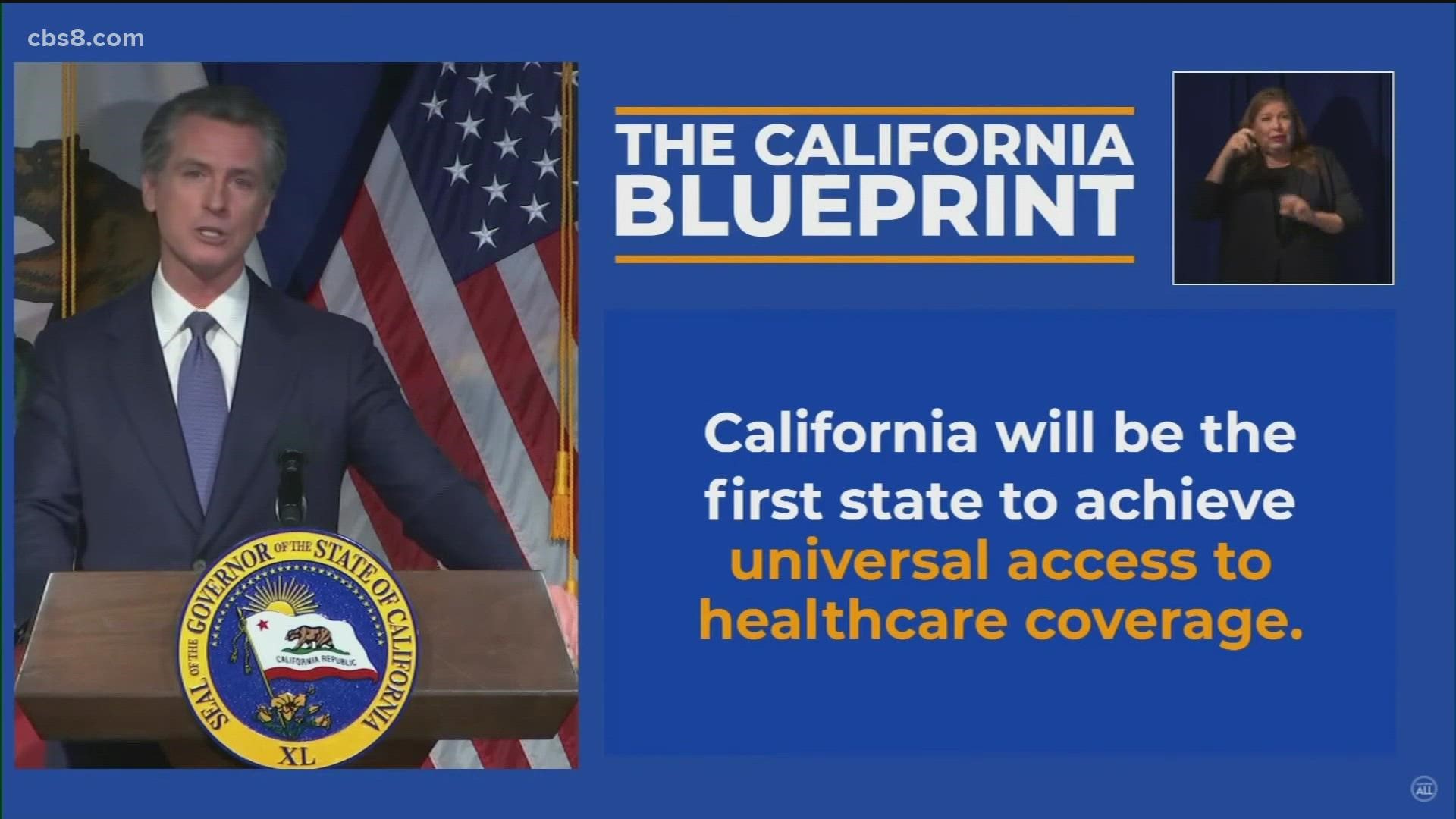CALIFORNIA, USA — This story was originally published by CalMatters.
In his January budget proposal to the state Legislature, Gov. Gavin Newsom gave a clear message: California needs to move people off the streets.
“I don’t want to see any more people die in the streets and call that compassion,” Newsom said Monday, detailing his $286.4 billion blueprint. “There is nothing compassionate about someone dying in the streets or stepping over someone on the streets or sidewalks.”
Newsom proposed $2 billion to address California homelessness – including $1.5 billion to buy and set up “tiny homes” and other temporary shelter options, which tend to fall far short of need and which he conceded would only be a “bridge” to permanent housing with services.
While substantial, the governor’s request pales in comparison to the funding he and the Legislature approved last year – $12 billion to create mostly homeless housing and board and care facilities, as well as to fund green-lit affordable housing projects.
“What we’re offering this year is additional money to find a bridge to the permanent supportive housing, and that’s tiny homes, that’s procuring treatment, that’s house slots and shelter slots in the interim,” Newsom said.
The governor projected that the money would mean another 11,000 beds for people experiencing homelessness, on top of 44,000 that will be created with last year’s budget.
The remaining $500 million in homeless dollars would go toward grants for local governments to relocate people living in encampments on vacant lots and freeway overpasses – a ten-fold increase from the funding approved last year and that will be distributed this summer.
Demand so far has outpaced supply, according to the agency in charge of reviewing grant applications: on Jan. 6, the state’s Business, Consumer Services and Housing Agency reported it had received requests for $120 million from more than 26 cities and 10 counties.
Christopher Martin, legislative advocate for Housing California, lamented the lack of funds to move people experiencing homelessness into already-existing housing more quickly.
“There’s not a dime in here that is going towards rental assistance or permanent housing,” he said. “Building shelter and treatment beds, that takes time. That’s going to take years. These people are dealing with the elements today.”
Rental assistance to keep those housed in their homes is also running out, however. The state has received relief applications totalling $6.8 billion, according to its dashboard, but received $5.2 billion from the federal government, about half of which local jurisdictions administer.
The agency previously expressed confidence the need would be filled by another round of federal funding, but in response to California’s $1.9 billion request to the U.S. Treasury Department, the state received only $62 million on Friday, Newsom said.
“And so for the purposes of this budget, we are looking to continue to engage directly with Treasury, the Biden administration, as we have been, and directly with legislative leaders,” he added.
Housing and climate change
Newsom’s blueprint to tackle California’s housing crisis totals another $2 billion and prioritizes the state’s climate goals.
“I just want to reinforce, to some extent … moving away from investments in housing that don’t focus on climate, health, integrating downtown schools, jobs, parks and restaurants,” Newsom said.
That includes about $800 million in grants to develop units and the infrastructure around them in mostly downtown areas, “in that space away from the sprawl,” the governor said. The idea is to avoid building in areas prone to wildfires, and to avoid the greenhouse gas emissions that result from long commutes.
Of that money, Newsom wants to set aside $100 million to help offset the high costs that make it difficult to turn old offices and other buildings into apartments – a practice UC Berkeley’s Terner Center found is most common in Los Angeles. Besides prioritizing downtown buildings, the grant helps meet the state’s climate goals by slashing the main culprit of construction waste: demolition. The remaining $100 million would go toward affordable housing on excess land already owned by the state.
The other $1 billion in Newsom’s housing budget is more specifically set aside for housing that is affordable to the lowest earners, with $500 million going toward the largest funding source for developers to build subsidized housing, the Low-Income Housing Tax Credit. The other $500 million is broken down into several measures, including $200 million to preserve deteriorating affordable housing in downtown areas, and $100 million to rehabilitate mobile home parks.
Matt Schwartz, president and CEO of the nonprofit California Housing Partnership, said while he applauds the new “short-term investments”, the money won’t come close to building the 1.2 million homes his group estimates the state needs by 2030.
“It’s time for the governor and state leaders to go beyond proposing another year of short-term assistance and instead commit to a long-term plan with sustained investments at the scale needed to solve the homeless and housing affordability crises and address climate change,” Schwartz said.
The League of California Cities was more positive on Newsom’s blueprint.
“The proposal makes good on last year’s promises by the state to continue investing in housing production, as well as housing coupled with mental health services for those experiencing homelessness,” Carolyn Coleman, the league’s CEO, said in a statement. “These proposed investments are a critical down payment by the state on the long-term funding needed to solve a decades-in-the-making crisis.”
WATCH RELATED: Gov. Gavin Newsom reveals $286 billion California budget proposal (Jan 10, 2022)

